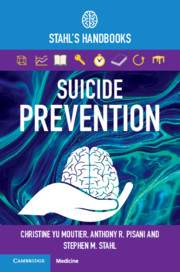Book contents
- Suicide Prevention
- Suicide Prevention
- Copyright page
- Contents
- Acknowledgements
- Section 1 Suicide Prevention Overview
- 1 Translating Science into Action
- 2 Dispelling Myths Surrounding Suicide
- 3 The Public Health Model of Suicide Prevention
- 4 Understanding Why: Drivers of Suicide Risk
- Section 2 Clinical Risk Assessment and Care
- Section 3 Special Topics: Medicolegal Considerations and Specific Populations
- Appendix Resource List
- Index
- References
3 - The Public Health Model of Suicide Prevention
from Section 1 - Suicide Prevention Overview
Published online by Cambridge University Press: 15 May 2021
- Suicide Prevention
- Suicide Prevention
- Copyright page
- Contents
- Acknowledgements
- Section 1 Suicide Prevention Overview
- 1 Translating Science into Action
- 2 Dispelling Myths Surrounding Suicide
- 3 The Public Health Model of Suicide Prevention
- 4 Understanding Why: Drivers of Suicide Risk
- Section 2 Clinical Risk Assessment and Care
- Section 3 Special Topics: Medicolegal Considerations and Specific Populations
- Appendix Resource List
- Index
- References
Summary
The science of suicide risk and prevention is growing, making one thing very clear. While suicide risk involves a complex set of risk factors, the end common pathway is a life-threatening health crisis. As is the case with all health-related causes of death, a robust public health strategy can reduce mortality. This chapter provides a framework for understanding the public health approach to preventing suicide. Examples of effective public health suicide prevention strategies at national and regional levels are provided.
- Type
- Chapter
- Information
- Suicide PreventionStahl's Handbooks, pp. 30 - 42Publisher: Cambridge University PressPrint publication year: 2021



